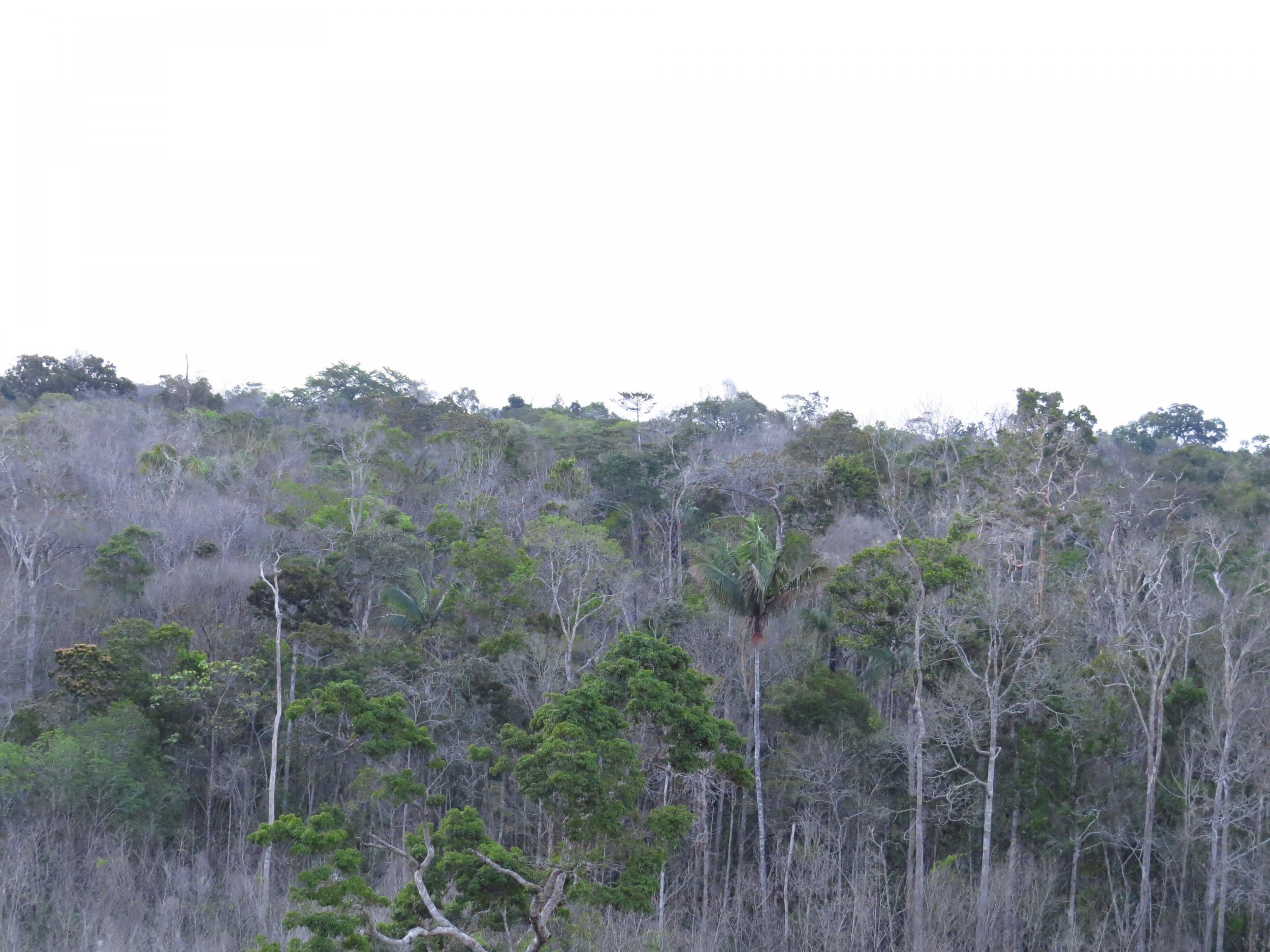Swathes of Amazonian rainforest dying as trees fail to keep up with climate change
Drought is killing parts of forest and new growth not emerging fast enough to replace them, study finds

Your support helps us to tell the story
From reproductive rights to climate change to Big Tech, The Independent is on the ground when the story is developing. Whether it's investigating the financials of Elon Musk's pro-Trump PAC or producing our latest documentary, 'The A Word', which shines a light on the American women fighting for reproductive rights, we know how important it is to parse out the facts from the messaging.
At such a critical moment in US history, we need reporters on the ground. Your donation allows us to keep sending journalists to speak to both sides of the story.
The Independent is trusted by Americans across the entire political spectrum. And unlike many other quality news outlets, we choose not to lock Americans out of our reporting and analysis with paywalls. We believe quality journalism should be available to everyone, paid for by those who can afford it.
Your support makes all the difference.Increased temperatures and droughts are taking their toll on the Amazon as trees are unable to adapt to the changing climate, a study has found.
Researchers examining decades of growth in parts of the rainforest found that global warming was linked to a changing tree composition – but as some tree species died, not enough were springing up to replace them.
As global temperatures rise, there will inevitably some “losers” that are not suited to the new conditions, but there will also be “winners”.
Species that are better adapted to living in dry conditions may do better, for example, while moisture loving trees are likely to vanish.
Based on their analysis, team leader Dr Adriane Esquivel Muelbert said the Amazon’s response is “lagging behind the rate of climate change”.
“The data showed us that the droughts that hit the Amazon basin in the last decades had serious consequences for the make-up of the forest, with higher mortality in tree species most vulnerable to droughts and not enough compensatory growth in species better equipped to survive drier conditions."
The Amazon rainforest is one of the most important ecosystems on the planet, accounting for 45 per cent of all tropical forests and storing 40 per cent of all carbon held in land vegetation.
Deforestation is posing a significant threat to the region as trees are cleared to make way for cattle farms and crops like soy.
However, even undisturbed patches of forest away from human influence are threatened by climate change, and the Amazon Forest Inventory Network has been set up to map the rainforest’s response to a warmer world.
The network consists of more than 100 plots from across the region that are subject to long-term monitoring.
Using data going back to the 1980s, Dr Muelbert’s team found that bigger trees had been the climate winners, benefiting from increased levels of CO2 in the atmosphere that allowed them to grown faster.
They also found that “pioneer trees” that spring up quickly were also benefiting from a boost in CO2.
But with deforestation thought to be adding to the intensity of the droughts that are causing significant dieback, the researchers said there findings indicated a serious need to protect sections of rainforest that remain intact.
"The impact of climate change on forest communities has important consequences for rainforest biodiversity,” said Dr Kyle Dexter, an ecologist at the University of Edinburgh who co-authored the study.
“The species most vulnerable to droughts are doubly at risk, as they are typically the ones restricted to fewer locations in the heart of the Amazon, which make them more likely to be extinct if this process continues.”
These findings were published in the journal Global Change Biology.
Join our commenting forum
Join thought-provoking conversations, follow other Independent readers and see their replies
Comments